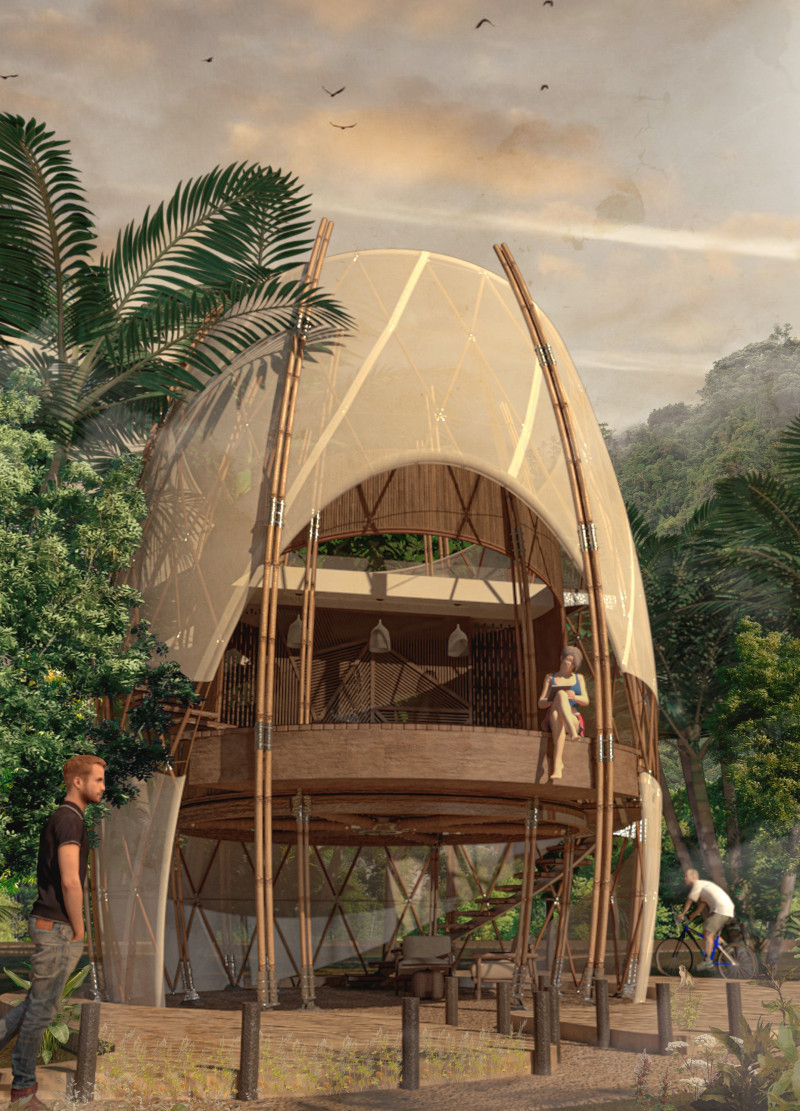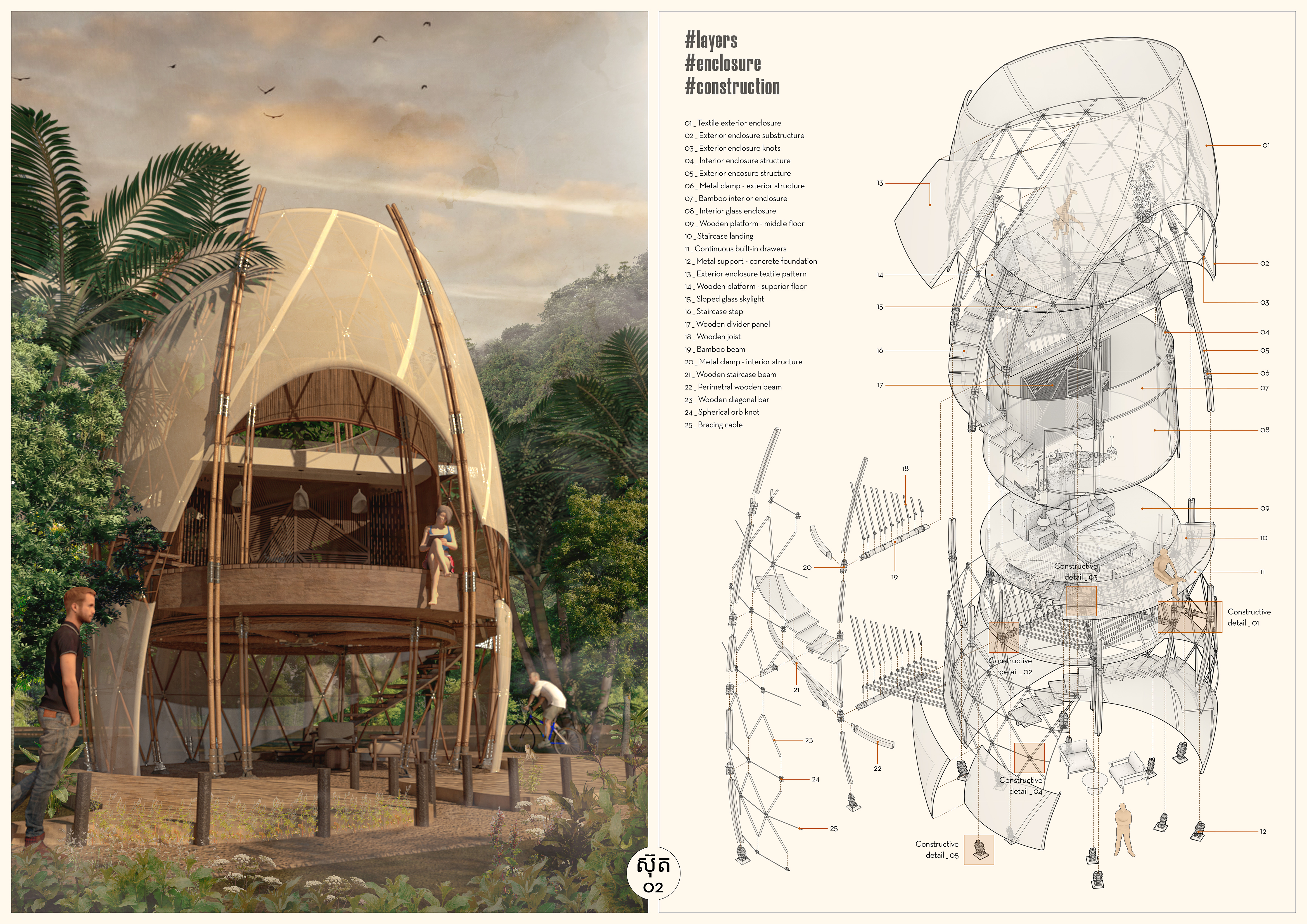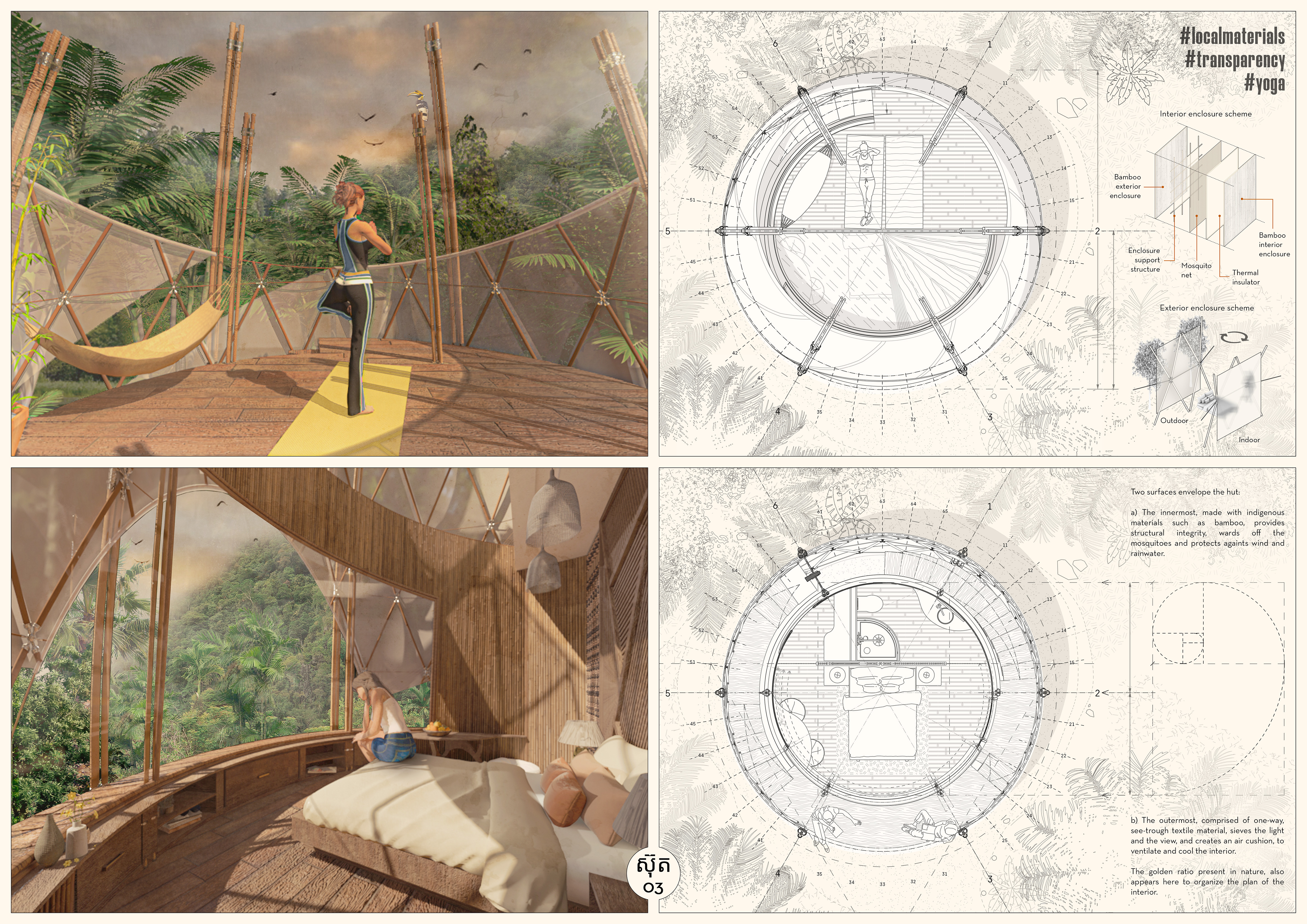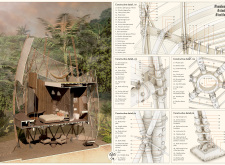5 key facts about this project
The ECC retreat, located at the foot of Phnom Vour mountain in Cambodia, creates an experience that connects people with nature in a peaceful setting. The design focuses on incorporating the landscape into everyday life, aiming to encourage both personal reflection and social interaction. Sustainability is a central theme, evidenced by both the choice of materials and the layout of the huts.
Materiality and Construction
Bamboo serves as the primary building material for the huts, known for its strength and lightness. This choice supports the structure while emphasizing a connection to the local environment. In addition to bamboo, textiles are used in the design, forming an outer layer that filters light and helps maintain a comfortable interior climate. These materials make the huts feel open and inviting, while still providing privacy to inhabitants.
Climate Adaptation and Ventilation
The design includes several features that address the tropical climate of the area. Natural ventilation strategies are implemented to keep the interiors cool. Spaces between the outer surfaces of the huts create airflow that cools the living areas. Elevating the structures protects them from flooding, and the sloped roofs enable efficient rainwater collection. These elements highlight a commitment to sustainability throughout the retreat.
Spatial Organization
The arrangement of the huts is intentional, placed in small clearings that create a sense of privacy while also promoting a feeling of community. Each hut is oriented to capture light and airflow, making them pleasant places to stay. Winding paths connect the buildings, inviting residents to explore their surroundings. This thoughtful layout balances communal spaces with opportunities for individual reflection.
Interior Design and Aesthetics
Inside the huts, spaces are designed following the principles of the golden ratio. This organization contributes to a calm atmosphere that invites relaxation. Light plays an important role, with openings designed to create interesting shadows and enhance the visual experience. The interplay between indoor and outdoor spaces is carefully considered, allowing residents to enjoy their connection with nature while remaining comfortable in their surroundings.






















































